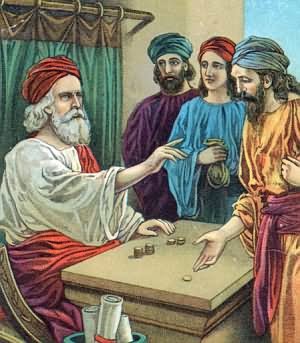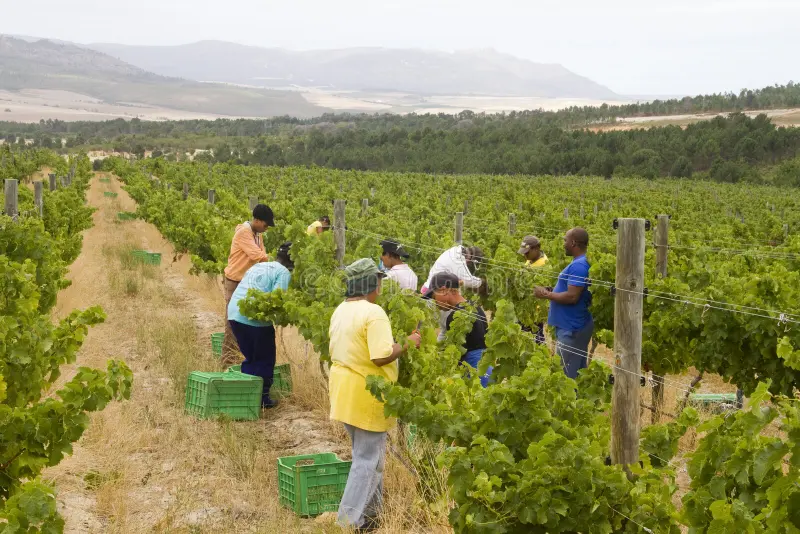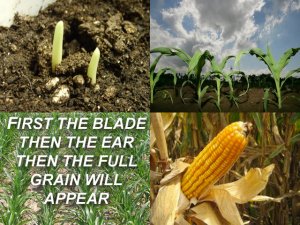Jesus tells another parable about the Net in Matt 13:47-50.
The master story teller comes up with another parable which would appeal to the common man especially fisher folks of His time. It was as if Jesus is saying to them: “Even the mundane task like your daily work speaks to you of the things of heaven.”
In Palestine there were two main ways of fishing. One was with the casting-net, the amphiblestron. It was a hand-net which was cast by the fisherman from the shore. The net is in shape like the top of a bell-tent, with a long cord fastened to the apex. This is tied to the arm, and the net so folded that, when it is thrown, it expands to its utmost circumference, around which are strung beads of lead to make it drop suddenly to the bottom. Now, the fisherman is half bent, and more likely half naked, keenly watching the surf, and spies his game tumbling carelessly towards him. He leaps to meet it and cast his net, which expands as it flies, and its leaded circumference strikes the bottom before the fish realises what’s happening its meshes have closed. By the aid of the cord the fishermen leisurely draws up the net and the fish with it. The skills required are a keen eye, an active frame, great skill in throwing the net. Above all he, must be patient, watchful, wide awake, and should promptly seize the opportune moment to throw.”
Let’s look at the second way of fishing which was with the drag-net, the sagene, what we would call the seine net or the trawl. Jesus is referring to this way of fishing in this parable. The seine net was a great square net with cords at each corner, and weighted so that, at rest, it hung, as it were, upright in the water. When the boat began to move, the net was drawn into the shape of a great cone and into the cone all kinds of fish were swept into the net. The net was then drawn to land, and the catch was separated. The useless material was flung away; the good was put into containers. It is interesting to note that sometimes the fish were put alive into containers filled with water. We are looking about 2000 years earlier than our times before the advent of electricity and refrigeration and there was no other way to transport the fish to be fresh over time and distance.
So, what are the lesson from this parable:
- Universal Church:
the nature of the drag-net is that it does not, and cannot, discriminate. The net is bound to bring in all kinds of things in its course through the water. Its contents are a mixture. If we apply that to the Church, which is the instrument of God’s Kingdom upon earth, it means that the Church cannot be discriminative but is bound to be a mixture of all kinds of people, good and bad, useless and useful.
Applying this teaching to the Universal church at large, there has been two views of the Church–the exclusive and the inclusive.
The exclusive view means that the Church is for people who are good, people who are really and fully committed, people who are quite different from the world. This is not the New Testament view, because, we know that Jesus came to save the lost sinner. Secondly we are not to play judges as the scriptures remind us in Matt 7:1. It is not for man to state who is committed to Christ and who is not.
On the other hand, the inclusive view is that the Church must be open to all, and that, like the drag-net, the church would be a human institution it is bring in a mixture of people within its fold. This institution is a make of people of all culture, race, nationality, age group, sinner, saint, good or bad. I believe this is what Jesus is teaching in this parable.
- Personally speaking:
But there is a personal lesson for each one of us in this parable and that is
- A time of separation will come when the good and the bad are sent to their respective destinations. That separation, however, certain as it is, is not man’s work but God’s. Therefore, it is our duty to gather in all who will come, and not to judge, but to leave the final judgment to God.
- This parable is about the end of age. There is a similar parable in Matt 13:39-42 the parable of the wheat and tares. Jesus has explained in it that the harvesters (angels) would come and separate the wheat and tares. One would enter the kingdom of God and the other would be thrown into the fire of hell. There are many similarities between these parable but the primary point of difference between the two are the parable of the weeds focuses on the co-existing of good and evil in this present world, whereas the parable of the net focuses more on the separation of good and evil at the end of the age.
- Do we believe in the truth of hell? For many, hell is a doctrine that is eliminated from the Bible. More people say they believe in heaven than in hell, and most people who believe in hell think they are not going there. However, Christ is teaching the doctrine of hell in this parable: And shall cast the lost into the furnace of fire: there shall be wailing and gnashing of teeth (Matt 13:50). Here and in other gospels, Jesus is very graphic while describing hell as a place of torment for both body and soul. There will be darkness and fire, suffering and screaming, gnashing of teeth and endless torment. If one has never thought of hell as a reality, Jesus is bringing it in this parable.
As I reflect on this parable, I ask myself how does it speak to me.
- For me personally, I think am I ready for Christ’s second coming? How else could I work for the salvation of the people around me who are being lost around me. What more can I do to save such souls and bring them to the Lord.
- When I go to Church on Sunday’s how do I look to people around me. Am I judgemental in my perspective of people around me. Do I give that person a chance to be saved like Christ gave me.
- When I meet people outside of church, am I judgemental of the way people dress, the colour of their hair, the size of the tattoo, the language they use, the behaviour of such person in public. How would Jesus approach this person.
As I reflect on this parable, I believe there is more that I can work on, the question is what about you?



